






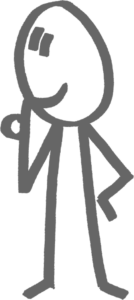
What is Visual Facilitation about?
This hot air balloon acts as a symbol for sharing the same context. As the facilitator, I have one key assumption which is, that best collaboration can happen if we create real exchange between people. What I mean is basically showing more of ourselves to each other. If we do that we exchange much more than just content – we create a real emotional relationship! Drawing together is a great way to achieve that emotional connection.
I think the real exchange is actually the only way how organisations can do change and create an engaging culture that helps them to thrive.
Coming back to the group being in the same meeting: What this group wants to achieve is to come to the desired outcome or do a change together.
The progress during the meeting is not linear, often the meeting has many ups and downs and hopefully ends successfully. This is where the role of the facilitator comes into play. So let’s have a look at the facilitator first.
As a facilitator, I’m a guide that leads the group through these ups and downs. The facilitator is not part of the group, he is not working in the content, he is more the creator of the working environment so that the group can have this real exchange and collaborate well. So what is now a visual facilitator doing?
I think the real exchange is actually the only way how organisations can do change and create an engaging culture that helps them to thrive.
Coming back to the group being in the same meeting: What this group wants to achieve is to come to the desired outcome or do a change together.
The progress during the meeting is not linear, often the meeting has many ups and downs and hopefully ends successfully. This is where the role of the facilitator comes into play. So let’s have a look at the facilitator first.
As a visual facilitator, as the word says, we make things visible. We listen to statements, quotes and ideas, but we also look for hidden things, like emotional positive reactions or conflicts. We are able to raise awareness around that in a neutral way.
A good friend of mine, Martin Haussmann, says: A visual facilitator is like being the marker – being the pen for the group.
So we bring onto this canvas what the people say and through drawing it we reflect it back to the group. We are acting as a mirror for the group process and help them through that change.
We are quite often not completely aware what the detailed discussion is about and that is not needed because we’re working a bit underneath the content layer. In this way, it doesn’t replace meeting minutes. We create a richer picture but not a detailed summary.
Let’s say we capture a 2-day conference, then it could be that the screen is 10 meters wide. At the beginning of the first day it is almost empty, it might have a headline or a topic on it. However, through the progress of the days, we capture what happened and by the end of the conference, we have created a timeline of insights.
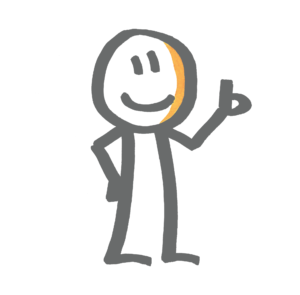
Graphic Recording at Agile Australia
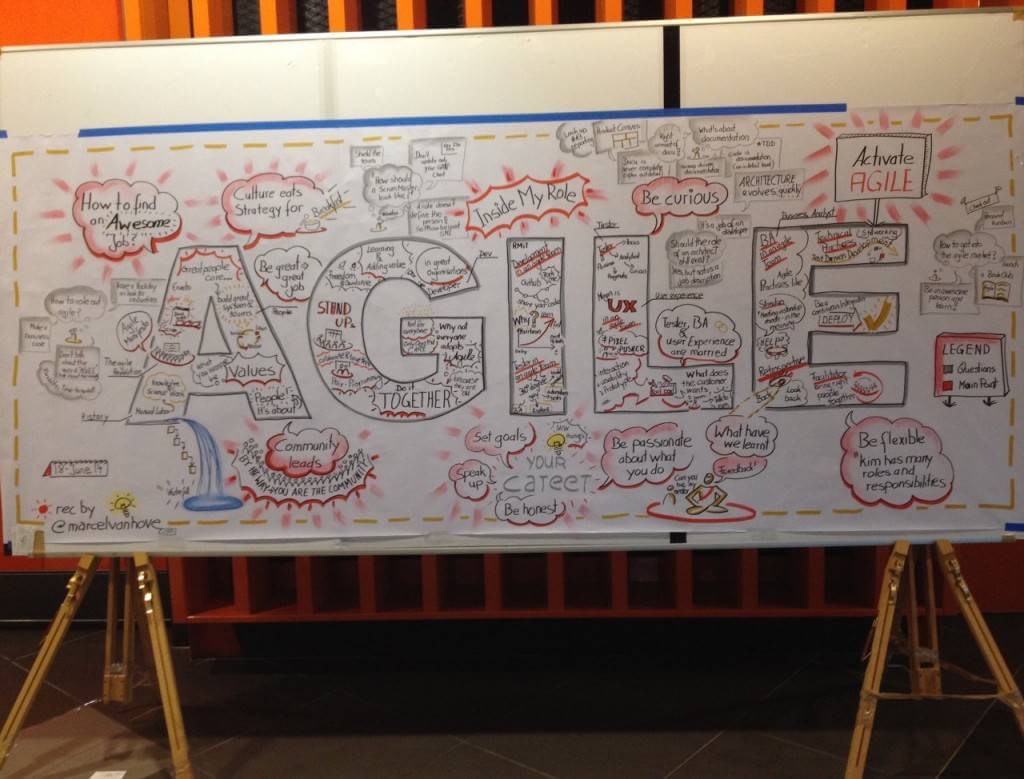
A facilitator is in charge of the dialogue, the exchange in the group. He creates space for collaboration. That’s true for the visual facilitator as well but he also captures the insights on a big screen and reflects them back to the group to inspire them to work further. Through that, we create a visual summary of what has happened. We actually make the dialogue visible.
If you liked what I just explained, or if you need a visual facilitator just shoot me an email or call me. If you want to learn it yourself come to my next visual facilitation training class. And follow me on twitter
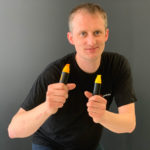
Marcel combines agile team coaching with visual thinking. Marcel believes that a group of people drawing together on a whiteboard can change the world. He loves high-performing teams and therefore coaches teams every day.
